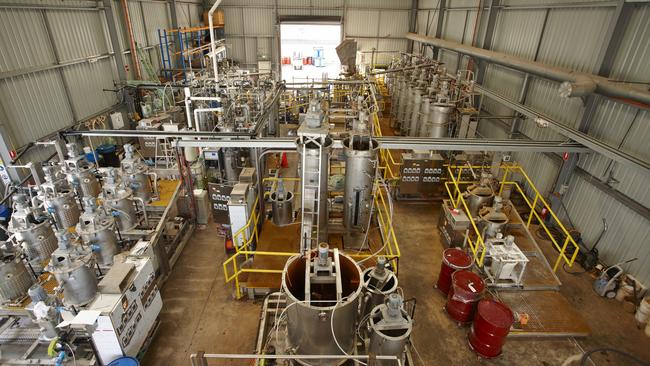Miners demand Canberra introduce production credit system for critical minerals industry
Joe Biden’s flood of subsidies will help only the US mineral refining industry and the Australian government must introduce its own support package, miners say.

Australia’s junior miners are stepping up a campaign for stronger government support for the country’s critical minerals sector, pushing the Albanese government to introduce a production credit the industry says could generate 4200 manufacturing jobs and deliver billions of dollars in downstream revenue.
Backed by modelling from consultancy Mandala Partners, industry lobby group AMEC and key members – including Chris Ellison’s Mineral Resources, lithium producers Pilbara Minerals and IGO and Andrew Forrest’s Wyloo Metals – have renewed a push for the introduction of production credits to kickstart Australia’s flagging investment in downstream processing in the face of the flood of cash subsidies available in the US.
AMEC and its members are pushing for the introduction of a tax credit that would refund 10 per cent of the production costs of chemicals such as lithium hydroxide, nickel sulphate, vanadium oxide and rare earth oxides. The credit would be refundable in cash to those companies not yet turning a profit.
Production credits are a key part of US President Joe Biden’s Inflation Reduction Act, and its efforts to industrialise the US economy, but have been resisted by both the Albanese government and its predecessor led by Scott Morrison.
Both favoured grants and discounted loans as their preferred method of encouraging downstream development of critical minerals projects – partly because loans do not generally affect the government’s budget deficit position, and partly due to a reluctance to bake in industry tax breaks that might be difficult to repeal in the future.
But the modelling paper, authored by Mandala director Tom McMahon – a former economics adviser to Labor ministers Bill Shorten and Andrew Leigh – argues the introduction of a production credit would likely have a net cost to the budget of only $340m over the budget forward estimates and $1.7bn in the 12 years to 2035.
Its introduction would help more than double projected nickel sulphate production, lift lithium hydroxide output by more than eight times to 642,000 tonnes a year and encourage the establishment of vanadium oxide processing – necessary for the adoption of long-dated battery storage solutions based on vanadium flow batteries.
AMEC chief Warren Pearce said the minerals sector could not rely on assurances that US government subsidies would eventually flow through to support for Australian processing projects.
“Australia is getting caught between two economic superpowers. The US is using the IRA to separate the critical minerals supply chains, into China and non-China. And it’s working. The problem for Australia is that it is restricting the options and opportunities for Australian critical minerals companies. They will now have to pick a supply chain at the outset,” he said.
“Nothing in the IRA does anything to assist Australian companies to develop downstream processing in Australia. In fact, it is making it much harder.”
Wyloo has an agreement with IGO that could see the two companies produce downstream nickel products from the WA mines owned by the companies.
But the flood of new nickel supply from Indonesia, which encouraged the development of downstream processing projects by banning the export of raw ore for offshore processing, has helped crash the nickel price and again put WA’s place in the global supply chain under threat.


To join the conversation, please log in. Don't have an account? Register
Join the conversation, you are commenting as Logout